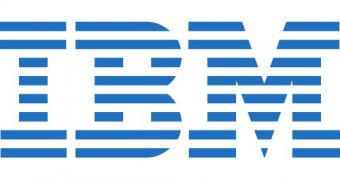Following its acquisition of SPCC and business analytics from RedPill, IBM proudly introduced the allegedly “largest private cloud computing environment for business analytics in the world.” This private cloud is supposed to have more than a petabyte of information (1,000 terabytes or 1,000,000 gygabytes). Lately, IBM has been shifting its focus from hardware to software and is investing in R&D in cloud computing and business analytics.
Driven by its encouraging earnings brought by this tactic, the enterprise went ahead and revolutionized cloud data storage. This internal product, called Blue Insight, is meant to allow for the quick taking of well-informed decisions of any customers working on a computer linked to the computing environment. The companion product that will allow for such an access was dubbed by the enterprise the IBM Smart Analytics Cloud.
What the scalable, private cloud will do is extract information from nearly 100 different information warehouses and data stores. With direct connection to thousands of business computers, employees will have a much easier time researching and comparing resources. The company estimates that about 200,000 employees in the sales and development department will have direct access to the information contained in Blue Insight. As such, the working efficiency and ingenuity is also expected to soar.
Sales executives will be in a much better position to understand revenue possibilities and decide when and where to make products available. Manufacturing process engineers can examine real-time data to improve yields and reduce the shipment delivery time and cost.
The Smart Analytic Cloud will recognize customizable queries that workers may use to accurately and efficiently look up the exact information they need at any time. This will allow for insights, strategies and decisions to be made in an orderly and efficient fashion. Naturally, reports, analyses, dashboards, and scorecards will also be possible to put together, enabling business-performance monitoring and result measurement.
An especially intriguing possibility offered by the Smart Analytics Cloud is the ability to extract information for decisions made at the point of sale. This will significantly improve the decision-making process in all aspects of IBM's marketing.
All of these actions are done through the Smart Analytics Cloud's features. The number of departmental solutions is reduced to a single BI environment capable of supporting vast numbers of users across the lines of business. Also, a single point of control is introduced for meeting departmental business processes, corporate security and compliance standards for an easier enforcement of standardization. Not only that, but the skilled BI resources are more efficiently used to support a common BI delivery tool, which can be made available across the enterprise.
Finally, cost-wise, the product reduces the capital and operating expenses needed to support enterprise-wide BI services and uses a self-service approach to dispensing them, reducing the time, resources and costs for their delivery to new divisions, departments and users.

 14 DAY TRIAL //
14 DAY TRIAL //